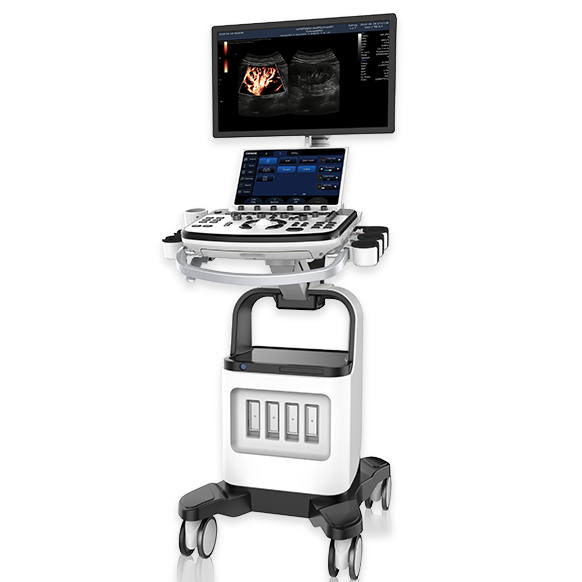How to Choose the Right Ultrasound Machine for Your Medical Practice
Investing in an ultrasound machine is a significant step for any healthcare provider. The right equipment can enhance diagnostic accuracy, streamline workflows, and improve patient outcomes. However, with countless options on the market—from compact handheld devices to fully featured imaging systems—choosing the right one can be overwhelming.
This guide will help you identify what to look for when selecting an ultrasound machine that fits your clinical needs and operational goals.
1. Identify Your Core Applications
Your specialty and the types of procedures you perform will determine the features you need most. For example:
- Obstetrics and Gynecology: Requires excellent image clarity, transvaginal probes, and capabilities for 3D or 4D imaging.
- Cardiology: Needs Doppler functionality, ECG integration, and high-quality sector probes.
- Musculoskeletal Imaging: Benefits from high-frequency linear transducers for detailed visuals of soft tissues.
- Emergency Medicine: Calls for lightweight, easy-to-use devices for quick bedside diagnostics.
Knowing your practice’s primary use cases will help you focus on machines tailored to your clinical environment.
2. Determine the Right Form Factor
Ultrasound systems vary widely in size and portability. Depending on how and where you plan to use the machine, you’ll want to consider:
- Handheld Units: Best for mobile care, quick exams, or use in tight spaces. Convenient but with limited features.
- Portable Devices: Resemble laptops and offer a balance between mobility and performance.
- Cart-Based Systems: Ideal for high-volume or specialized practices. These units offer superior imaging and advanced features but take up more space.
The format you choose should match your clinic’s layout, patient load, and imaging complexity.
3. Assess Image Performance
Image clarity is crucial in any diagnostic setting. Look for:
- High Resolution: Important for clear visualization of organs, vessels, or fetuses.
- Depth Capability: Particularly useful when scanning deeper anatomy or heavier patients.
- Doppler and Color Flow Imaging: Essential for vascular studies and heart exams.
- 3D and 4D Features: Beneficial in prenatal imaging and complex anatomical evaluations.
Request live demonstrations or test scans to ensure the system meets your expectations for image quality.
4. Examine Usability and Software Capabilities
User interface and built-in features can significantly affect daily use. Pay attention to:
- Exam Presets: Make scanning quicker and more consistent.
- Automated Tools: Help reduce human error and save time on measurements.
- Touchscreens and Interfaces: Offer faster, more intuitive navigation.
- Data Integration: Compatibility with PACS, EMR systems, and cloud platforms improves record-keeping and sharing.
Choose a system that simplifies your workflow and supports staff efficiency.
5. Select Compatible Transducers
The versatility of a machine often depends on its probes. Common types include:
- Linear Probes: Good for superficial structures, tendons, and vascular exams.
- Curved Array Probes: Standard for abdominal and pregnancy scans.
- Phased Array Probes: Designed for cardiac imaging in narrow intercostal spaces.
- Endocavitary Probes: Used for internal scans like pelvic or prostate exams.
Ensure the system supports the probe types necessary for your exams, and check if additional transducers can be added later.
6. Set a Practical Budget
Ultrasound machine pricing varies significantly depending on features and brand. General price ranges include:
- Basic handheld models: $3,000 to $10,000
- Mid-tier portable units: $15,000 to $40,000
- Advanced console systems: $50,000 and beyond
Don’t forget to account for ongoing costs such as probe replacements, software updates, training, and maintenance contracts.
7. Evaluate Support and Maintenance Services
Before finalizing a purchase, investigate the vendor’s reputation for after-sales service. Important questions include:
- What warranty coverage is offered?
- Is technical support available on-site or remotely?
- Are software updates and training included?
- How responsive is the customer service team?
Strong support can save time and minimize downtime in a busy practice.
8. Plan for Growth
A forward-thinking investment should support future expansion. Systems with upgradeable software, modular design, and compatibility with newer probes will continue to serve your practice as technology evolves and your needs change.
Final Thoughts
The ideal ultrasound machine should align with both your immediate clinical requirements and your long-term vision. By thoroughly evaluating use cases, features, usability, and support options, you’ll be well-equipped to make a choice that enhances diagnostic precision and improves the patient experience.
